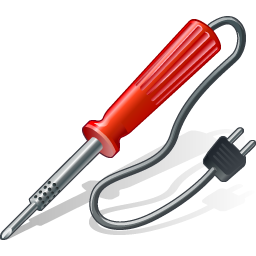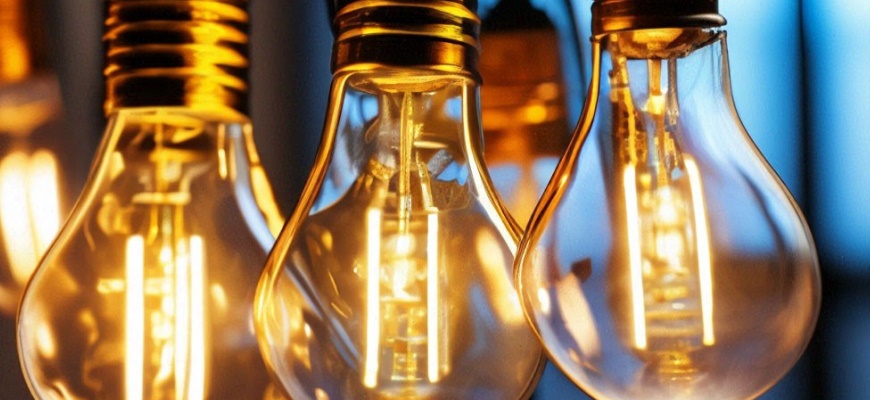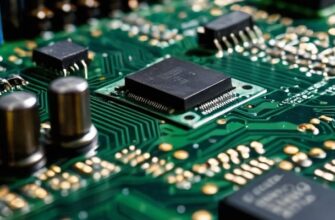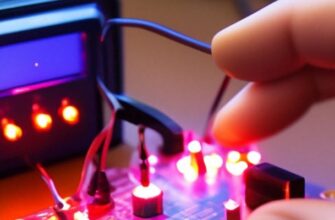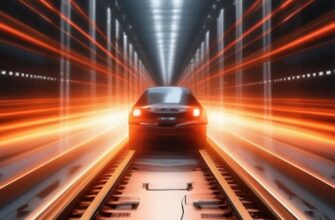Electric power plays a very important role in all electrical engineering and electronics. All electrical appliances consume electrical energy from electrical grid. Some devices consume a lot of electric power, for example iron, and some very little, for example, LED lamp.
Hydraulic Analogy
So we have a pipe through which water flows.
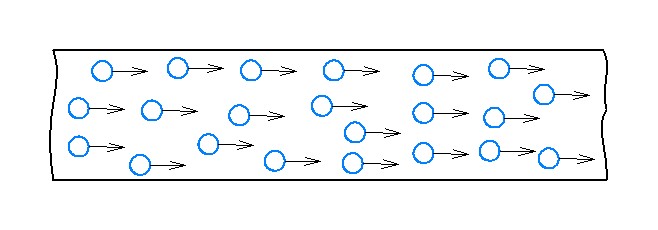
Let’s attach a shaft with blades to our tube
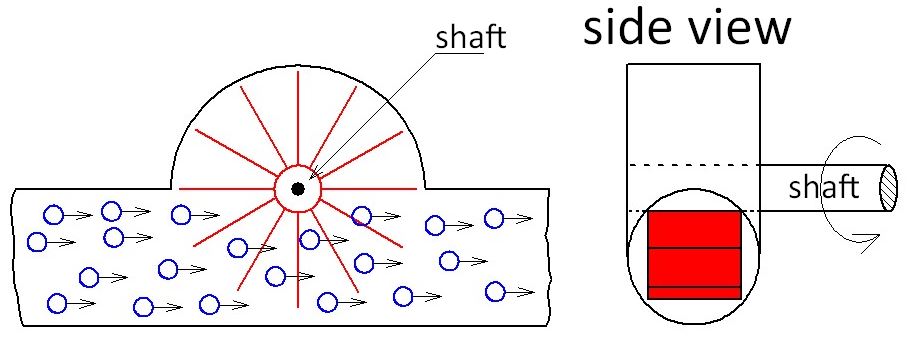
The rotor with blades looks like this, but without holes in the blades:

This whole structure will look like a mini hydroelectric generator
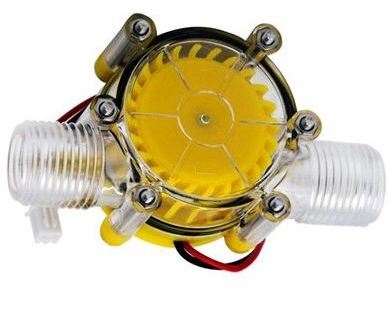
It connects to a garden hose and can generate an electric current. The fact that it can generate electricity is not important to us at the moment.
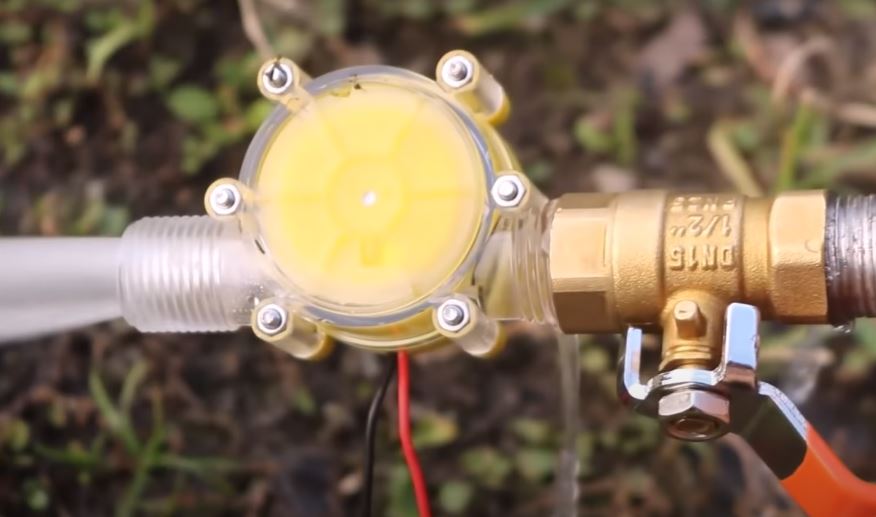
and we have a waterwheel
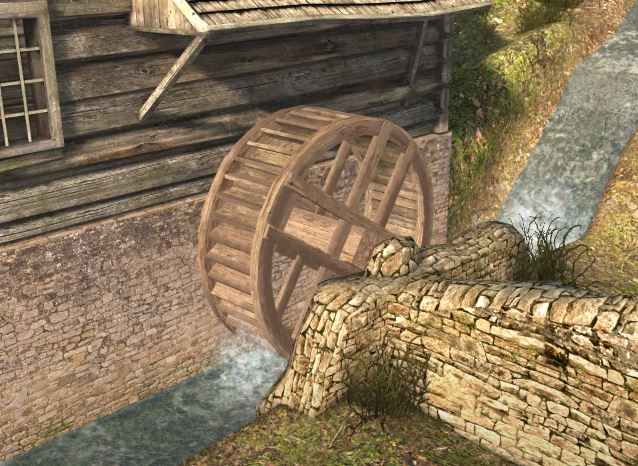
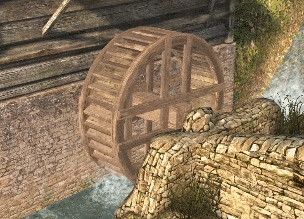
From all the examples above, I think you get what I wanted to show you.
Will the shaft spin if the water doesn’t move anywhere? Of course not. But why? The water doesn’t move anywhere, so it can’t push the blades, which means the shaft won’t spin either. But if the water starts flowing, the shaft with the blades will also start rotating. It’s obvious.
Ok, we have the waterwheel.

What does the rotational speed depend on?
First, from the speed of water flow. The faster the water flow runs, the faster the water wheel spins
Second, from the amount of water. The more flow going through the wheel, the better it spins.
If you attach some mechanism to the shaft, you can make the waterwheel work for the benefit of people. In this example, we see a water wheel sawing a log. In order for the water wheel to have enough power to pull the saw, the speed of the falling water and the amount of water should be as high as possible.
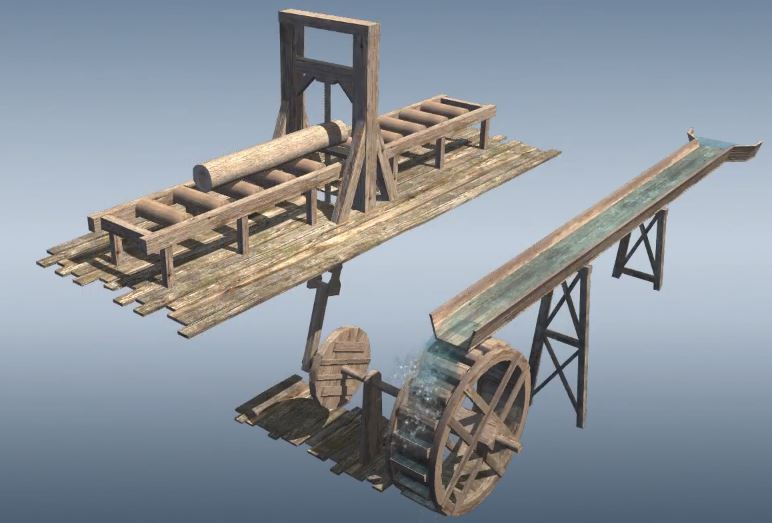
On which river the wheel will spin faster?
This one?

or that one?

Of course, in the first picture.
What does the flow of water in a river depend on? It depends on the slope of the river. The stronger the slope angle, the faster the water will flow in the river.
Let’s schematize all of this.
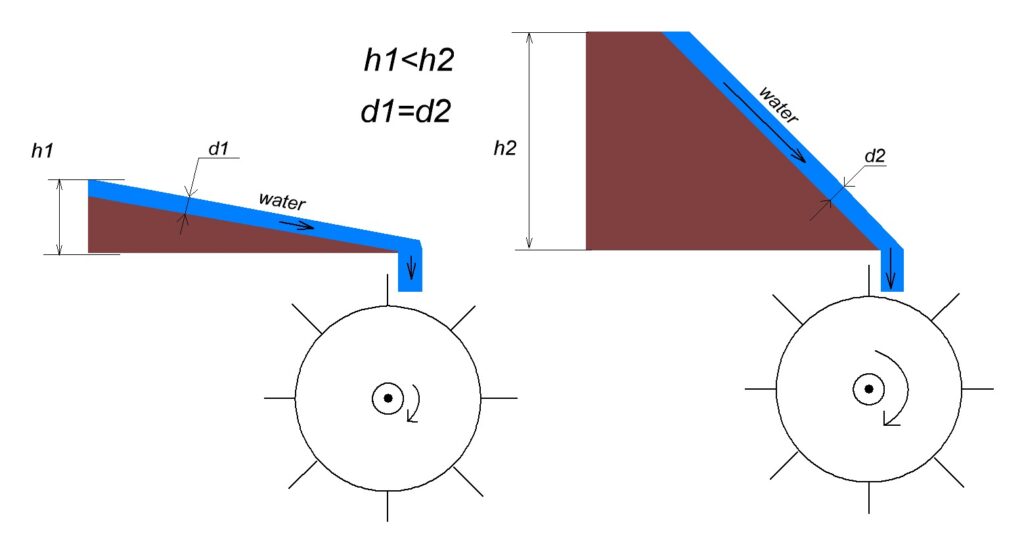
As you may have noticed, we have different rivers level elevations. h1<h2. So we have different levels. Does that ring a bell? Of course, it’s a voltage analogy! The higher the water level in a container, the greater the pressure on the bottom of that container.
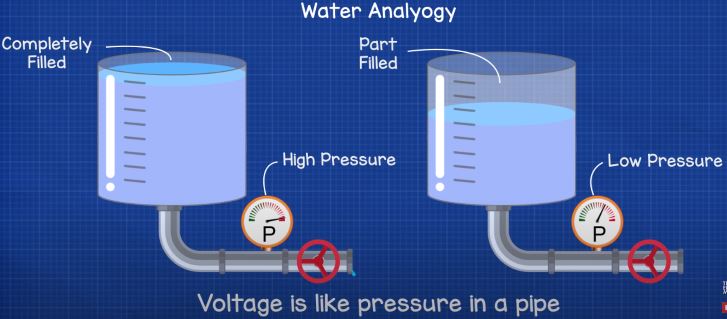
Even if both rivers are the same depth (d1=d2), where the slope of the river is greater, the harder the water wheel will spin.
But there’s also a second aspect. Let the angle of slope of the river in both cases be equal (h1=h2).The water depth in the first river will be shallower than in the second river (d1<d2)
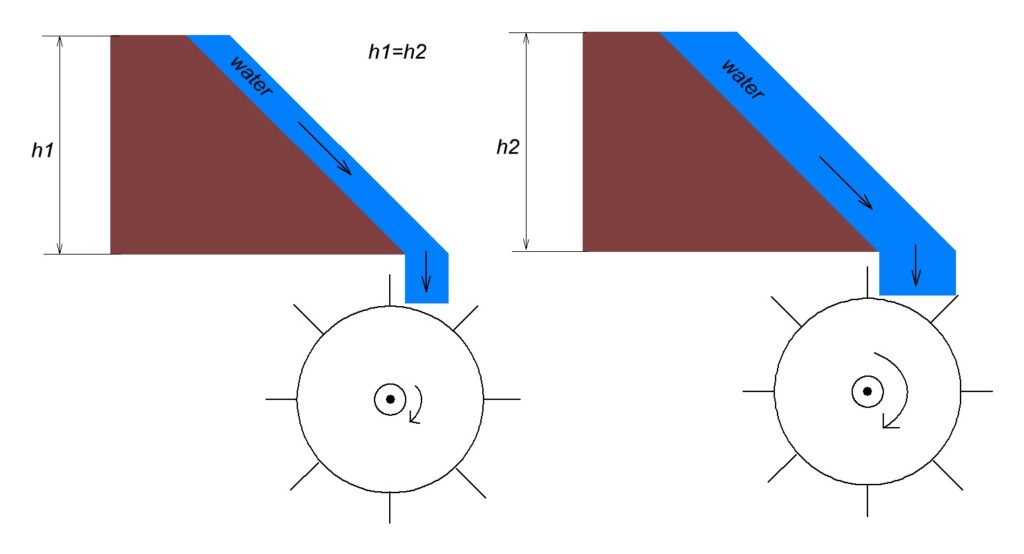
In which of the two cases the wheel will spin faster? Of course, where the river is deeper. We can say that in the picture on the left a smaller volume of water will pass through the wheel than in the picture on the right in some specific amount of time. In the electronics analogy, it’s all very similar to the current, isn’t it?
Let’s summarize: the greater the speed and volume of water that is poured onto the water wheel, the more powerfully and faster it will spin.
What is power
We have two characters, John

and Paul.
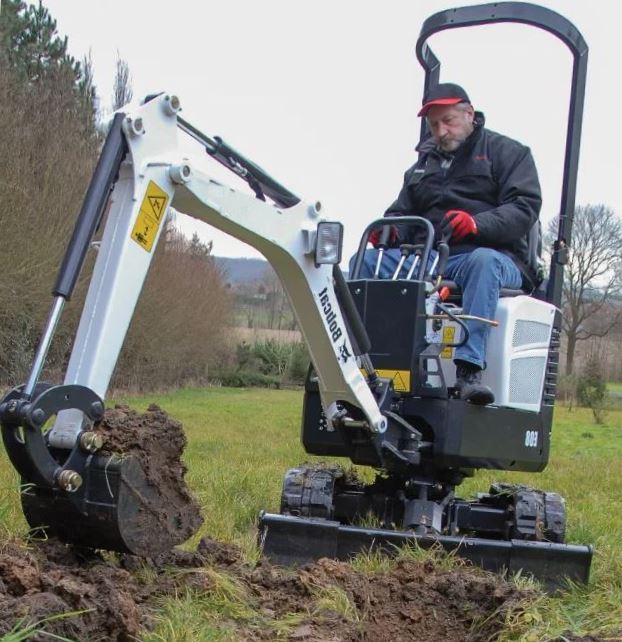
They only have one hour to dig a hole. Who will dig the deeper hole? Of course Paul. Paul uses a mini-excavator in his work. While John is throwing out a small bunch of earth, Paul is digging up a whole bucket of earth in the same amount of time. Paul does more useful work than John does in the same amount of time. In this case, we can say that Paul’s power is higher than John’s power.
The power formula looks like this
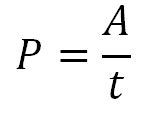
A – useful work, J (joule)
t – time, sec
P – power, W (watt)
Power is a value that shows the speed of performing the useful work.
What is electric power
Electrical power can be consumed by some electrical energy consumer, or it can be generated. Electric power is how much energy consumed instantaneously (at any instant) or the rate of transferred energy per unit time. In electrical engineering, power is defined as the energy consumed over some period of time.

Unit of electric power is watt (W). Electric power is 1 watt when 1 joule of electric work is done 1 sec or electric power is 1 watt when 1 joule of electrical energy is consumed in 1sec.
Electric power formula
The electrical power formula is derived from other formulas.
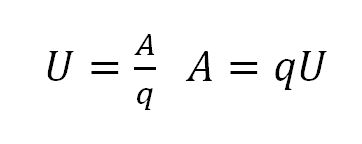
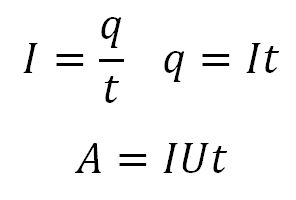
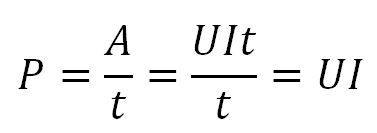
So for DC current, the formula looks like this:
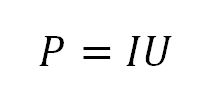
P – electric power, W (watt)
I – current, A (amps)
U – voltage , V (volts)
As you can see from the formula, the higher the current or voltage, the higher the electric power. Almost the same as hydraulics. The higher the slope (voltage) and the greater the amount of water flowing in a unit of time (current), the more powerful the water wheel will be.
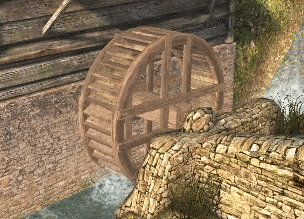
How to measure DC electric power
Modern laboratory power supplies give constant voltage, current and even power readings on the built-in display.
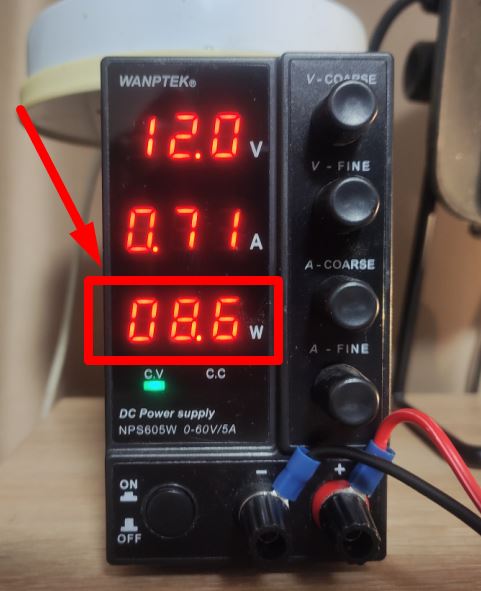
As you can see, this is the multiplication of voltage and current (12 x 0.71=8.52 W)
If you don’t have a lab power supply, you can buy a simple DC power meter on Aliexpress.
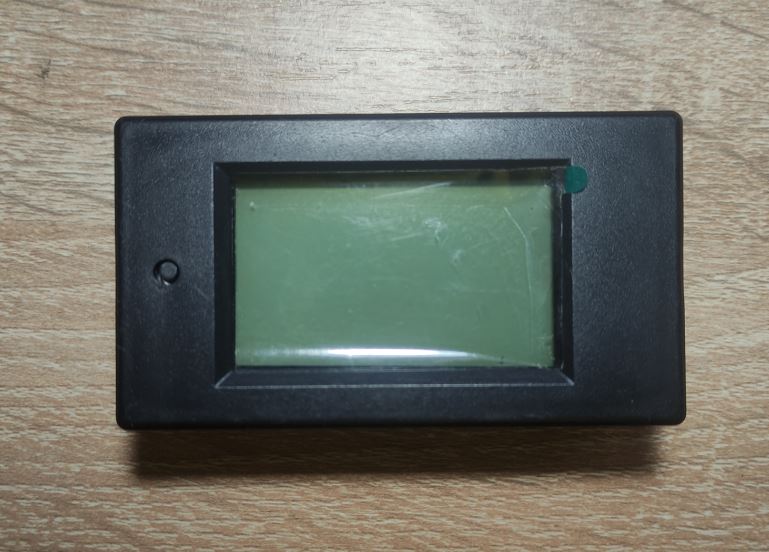
On the reverse side there are terminals for connection and a wiring diagram.
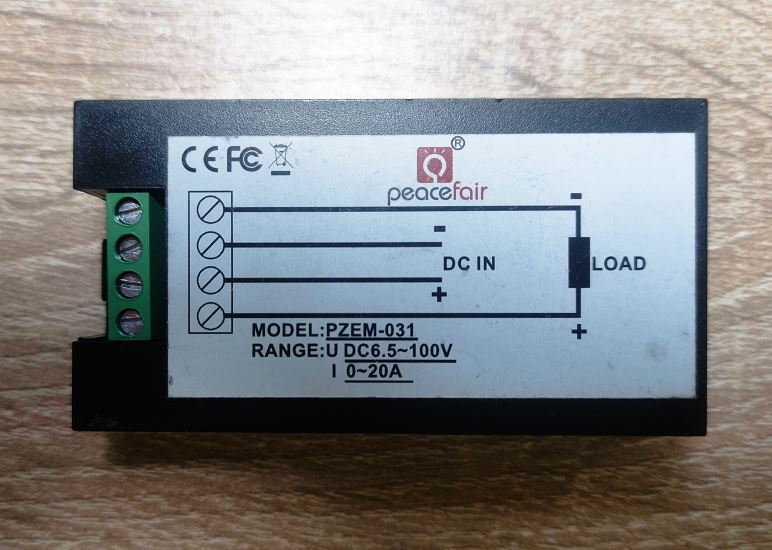
Let’s find out how much power our lamp consumes.
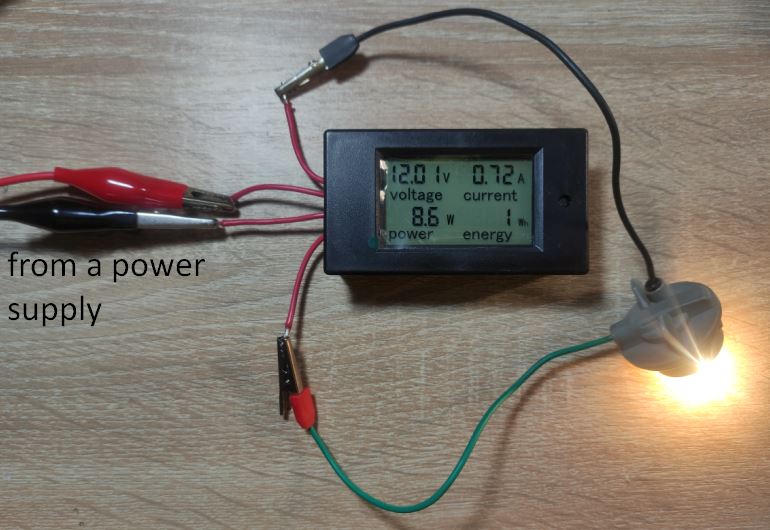
Voltage 12 V, current 0.72 A, electric power 8.6 W. P=UI=12 х 0.72=8.64 W. The same value we see on the display.
But what if you don’t have such a wattmeter? Then we’ll have to assemble a simple circuit of ammeter and voltmeter.
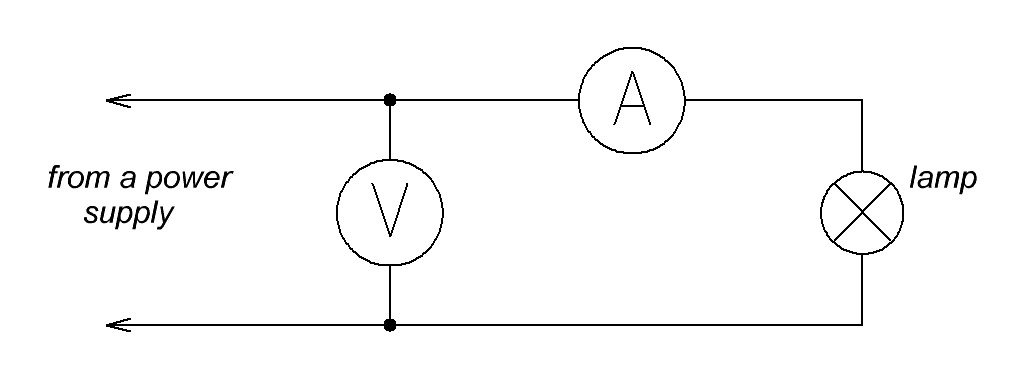
We’re going to use two multimeters. We will set one multimeter to measure current and the other to measure voltage.
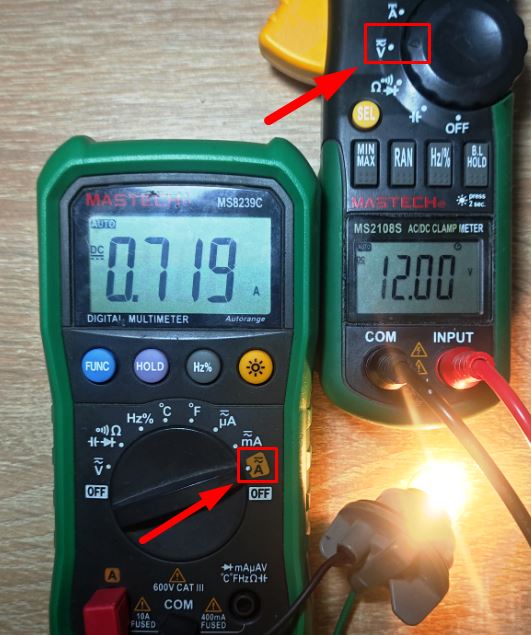
P=IU=0.719A х 12V=8.63 Watts.
